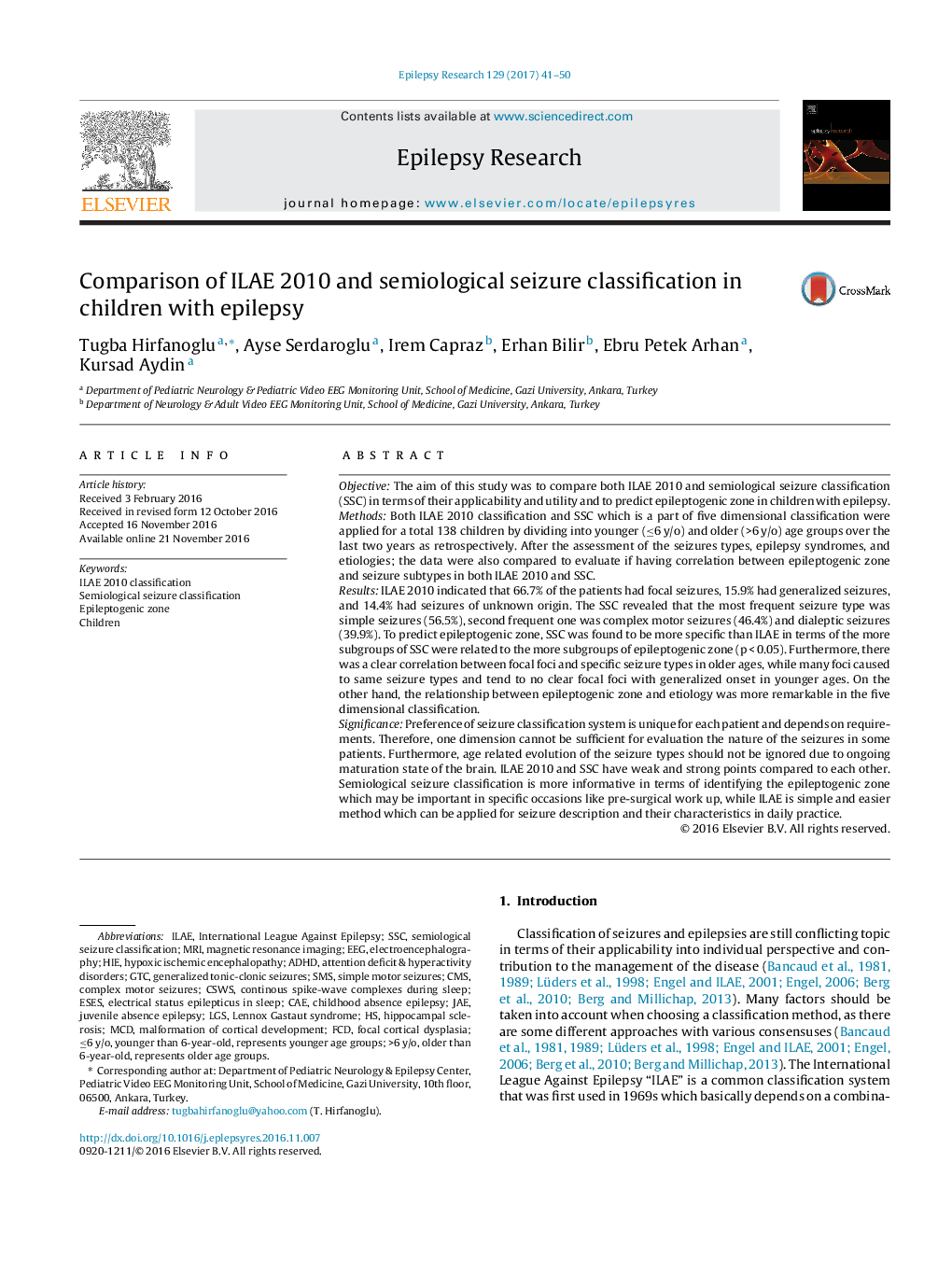| کد مقاله | کد نشریه | سال انتشار | مقاله انگلیسی | نسخه تمام متن |
|---|---|---|---|---|
| 5628769 | 1579894 | 2017 | 10 صفحه PDF | دانلود رایگان |

- The seizure classification is complex and controversial in the perspective of different approaches.
- Same seizure types can be originated from different foci in younger ages.
- A certain focus can lead to multiple seizure types with tendency of generalized seizures in younger ages.
- Semiological seizure classification can provide details for anatomical evolution of the seizures.
- ILAE 2010 seizure classification can be preferred in general practice and daily clinical use.
ObjectiveThe aim of this study was to compare both ILAE 2010 and semiological seizure classification (SSC) in terms of their applicability and utility and to predict epileptogenic zone in children with epilepsy.MethodsBoth ILAE 2010 classification and SSC which is a part of five dimensional classification were applied for a total 138 children by dividing into younger (â¤6 y/o) and older (>6 y/o) age groups over the last two years as retrospectively. After the assessment of the seizures types, epilepsy syndromes, and etiologies; the data were also compared to evaluate if having correlation between epileptogenic zone and seizure subtypes in both ILAE 2010 and SSC.ResultsILAE 2010 indicated that 66.7% of the patients had focal seizures, 15.9% had generalized seizures, and 14.4% had seizures of unknown origin. The SSC revealed that the most frequent seizure type was simple seizures (56.5%), second frequent one was complex motor seizures (46.4%) and dialeptic seizures (39.9%). To predict epileptogenic zone, SSC was found to be more specific than ILAE in terms of the more subgroups of SSC were related to the more subgroups of epileptogenic zone (p < 0.05). Furthermore, there was a clear correlation between focal foci and specific seizure types in older ages, while many foci caused to same seizure types and tend to no clear focal foci with generalized onset in younger ages. On the other hand, the relationship between epileptogenic zone and etiology was more remarkable in the five dimensional classification.SignificancePreference of seizure classification system is unique for each patient and depends on requirements. Therefore, one dimension cannot be sufficient for evaluation the nature of the seizures in some patients. Furthermore, age related evolution of the seizure types should not be ignored due to ongoing maturation state of the brain. ILAE 2010 and SSC have weak and strong points compared to each other. Semiological seizure classification is more informative in terms of identifying the epileptogenic zone which may be important in specific occasions like pre-surgical work up, while ILAE is simple and easier method which can be applied for seizure description and their characteristics in daily practice.
Journal: Epilepsy Research - Volume 129, January 2017, Pages 41-50